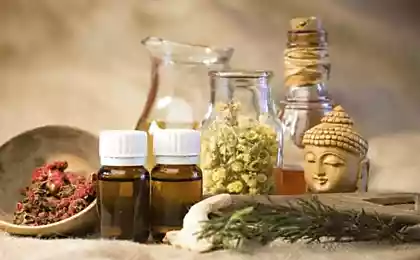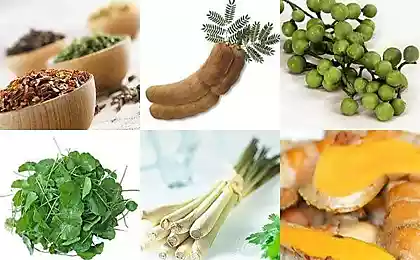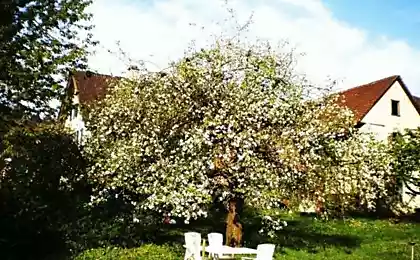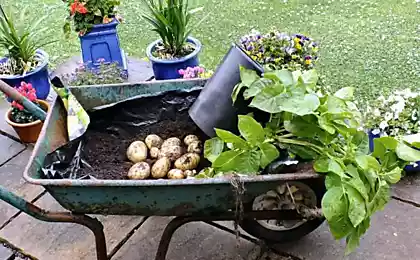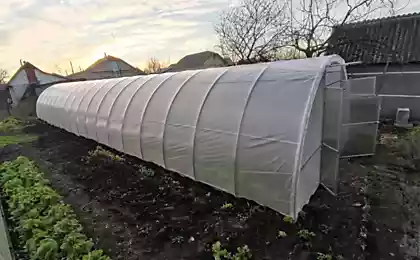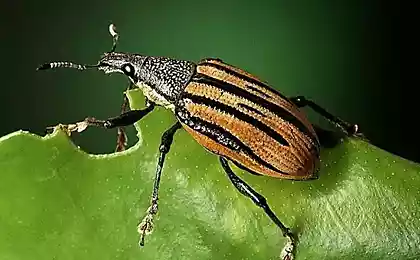587
Protect plants from pests and diseases
Pests and diseases!.. People encountered them in primitive times. Surprisingly, wild-growing vegetation is not knew (and still knows) so the depredations of insect pests and microorganisms, as they are cultivated (domesticated) relatives. The extent of the damage grew as a person in the process of crop improvement, favored the most productive, most delicious and nutritious samples. To obtain a high yield, it was necessary to improve the growing conditions of the plants, which had a favorable impact on the development of pests and pathogens. In conditions of abundant supply, they are significantly multiplied and began to deprive a person of a considerable part of the harvest. Now, the main task was the creation of such varieties and hybrids of agricultural plants and their conditions for growth and development that simultaneously with the increase in yield would greatly multiply the many "freeloaders ". Does it really make? Of course, if you bring in allies. the millennial experience of our ancestors and the latest achievements of science and technology.
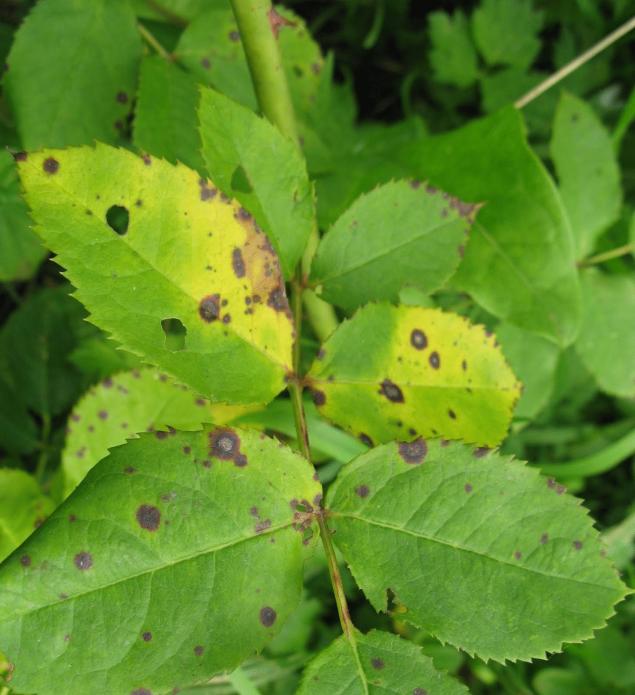
First, to protect plants, we need to purposefully cultivate a phytosanitary situation, which will eliminate the need to use methods, so-called direct combat pests and pathogens. This preventive approach has shown its high efficiency in medicine, when she "sobered up" after the success of the so-called "pharmaceutical quick treatment." Give only a few General provisions: healthy soil is the best prerequisite for growing healthy plants. Biologically active (rich in microorganisms and lower animals) the soil has a large "Wellness potential" and quickly kills any trapped pathogens and inactive phases of insects. Typically, this soil, rich in organic matter, well aerated, optimally hydrated, with a neutral or close to it reaction of the soil solution. These parameters contribute to the formation of healthy plants, are physiologically resistant to defeat pathogens. This also can be included and other requirements for plant protection, above all, balanced nutrition, not only for the major elements (nitrogen, phosphorus, potassium), but for many trace elements (copper, boron, zinc, fluorine, etc.). It is known that the excess application of nitrogen fertilizers (the perennial "disease" is not a measure of diligent owners) not only is accompanied by enhanced growth of plants, the formation of a powerful leaf-stem mass of "loose" water-bearing tissues, but strong damage from their diseases and pests. The response of plants to phosphorus and potassium most often — the reverse. Known for a whole range of so-called physiological diseases, which are caused by the lack or excess in the soil of certain trace elements.
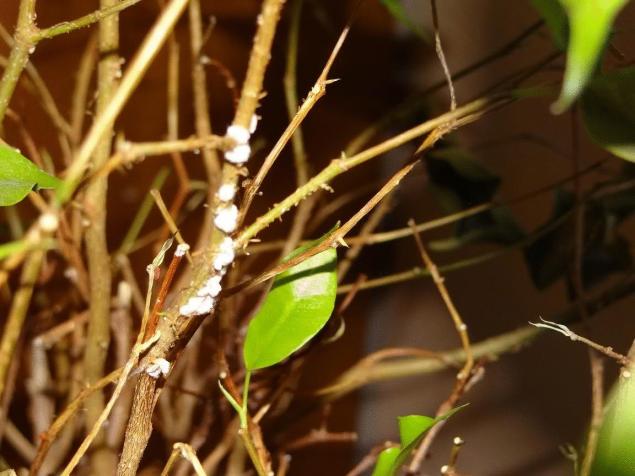
The most "powerful" preventive measures for the protection of plants, and relates the formation of correct rotation. The basic requirement is the alternation in time of a particular culture (or botanically related crops) so that it (they) has returned to its former place as rarely as possible (2-4, sometimes more). The gap in time is called "phytosanitary interval ". He needed to during this time the soil becomes completely purified of pathogens remaining in it after the previous culture. Of great importance in this case are the biological characteristics of the preceding culture. The fact that the root allocation of some plants have the ability to vigorously clean the soil from pathogens due to the "provoking" of the transition of the pathogens from very different cultures from passive (e.g. cyst nematodes) in the active state when they quickly die from "hunger" for lack of a host plant. Some plants repel pests. For example, the bow against the cabbage fly and cabbage to the onion fly, horse beans to wireworms, etc., These plants are best used as components in mixed crops. In recent years a huge number of varieties and hybrids that are resistant to certain pathogens or pests. Resistant varieties are selected, first and foremost, against the most dangerous pathogens for a given zone (area). Cottager can be calm if he sow varieties with complex resistance — resistance to multiple threat objects. But these varieties occur until quite rare.
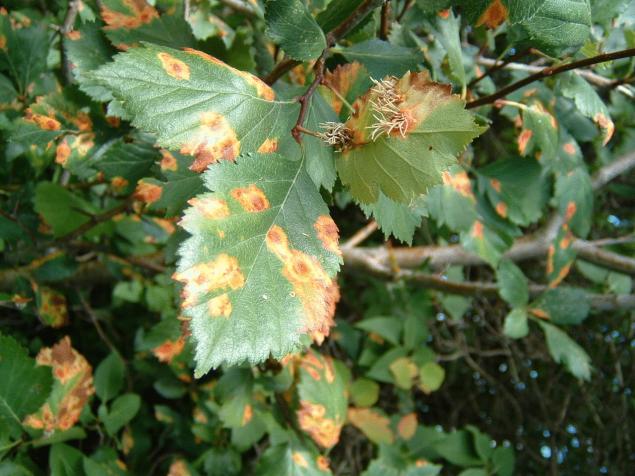
Another constant concern of the competent residents to protect plants is to promote the development of useful organisms. It is known that strong fluctuations in the number of pests and pathogens, including in cases of mass destruction of the crop due (except changing weather conditions) and even monotony of the crops of cultivated plants. As to more varied herbage, the number of pathogens is much smaller, it is better to give preference to mixed (2-4-component) crops annual crops. They are the most favorable habitat for beneficial insects that develop (eat) due to pests, thus reducing their numbers and preventing mass reproduction (for example, oviphages Trichogramma, spiders, butterflies, mushrooms Trihoderma, etc.). Sometimes, to attract such beneficial insects along tracks or fence sow crucifers or legumes.
Source: /users/147

First, to protect plants, we need to purposefully cultivate a phytosanitary situation, which will eliminate the need to use methods, so-called direct combat pests and pathogens. This preventive approach has shown its high efficiency in medicine, when she "sobered up" after the success of the so-called "pharmaceutical quick treatment." Give only a few General provisions: healthy soil is the best prerequisite for growing healthy plants. Biologically active (rich in microorganisms and lower animals) the soil has a large "Wellness potential" and quickly kills any trapped pathogens and inactive phases of insects. Typically, this soil, rich in organic matter, well aerated, optimally hydrated, with a neutral or close to it reaction of the soil solution. These parameters contribute to the formation of healthy plants, are physiologically resistant to defeat pathogens. This also can be included and other requirements for plant protection, above all, balanced nutrition, not only for the major elements (nitrogen, phosphorus, potassium), but for many trace elements (copper, boron, zinc, fluorine, etc.). It is known that the excess application of nitrogen fertilizers (the perennial "disease" is not a measure of diligent owners) not only is accompanied by enhanced growth of plants, the formation of a powerful leaf-stem mass of "loose" water-bearing tissues, but strong damage from their diseases and pests. The response of plants to phosphorus and potassium most often — the reverse. Known for a whole range of so-called physiological diseases, which are caused by the lack or excess in the soil of certain trace elements.

The most "powerful" preventive measures for the protection of plants, and relates the formation of correct rotation. The basic requirement is the alternation in time of a particular culture (or botanically related crops) so that it (they) has returned to its former place as rarely as possible (2-4, sometimes more). The gap in time is called "phytosanitary interval ". He needed to during this time the soil becomes completely purified of pathogens remaining in it after the previous culture. Of great importance in this case are the biological characteristics of the preceding culture. The fact that the root allocation of some plants have the ability to vigorously clean the soil from pathogens due to the "provoking" of the transition of the pathogens from very different cultures from passive (e.g. cyst nematodes) in the active state when they quickly die from "hunger" for lack of a host plant. Some plants repel pests. For example, the bow against the cabbage fly and cabbage to the onion fly, horse beans to wireworms, etc., These plants are best used as components in mixed crops. In recent years a huge number of varieties and hybrids that are resistant to certain pathogens or pests. Resistant varieties are selected, first and foremost, against the most dangerous pathogens for a given zone (area). Cottager can be calm if he sow varieties with complex resistance — resistance to multiple threat objects. But these varieties occur until quite rare.

Another constant concern of the competent residents to protect plants is to promote the development of useful organisms. It is known that strong fluctuations in the number of pests and pathogens, including in cases of mass destruction of the crop due (except changing weather conditions) and even monotony of the crops of cultivated plants. As to more varied herbage, the number of pathogens is much smaller, it is better to give preference to mixed (2-4-component) crops annual crops. They are the most favorable habitat for beneficial insects that develop (eat) due to pests, thus reducing their numbers and preventing mass reproduction (for example, oviphages Trichogramma, spiders, butterflies, mushrooms Trihoderma, etc.). Sometimes, to attract such beneficial insects along tracks or fence sow crucifers or legumes.
Source: /users/147









